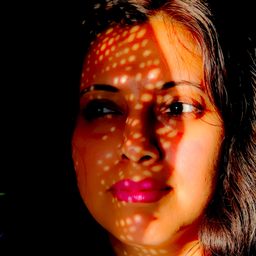- Home
- /
- spirits
- /
- liquers
- /
- pickled placenta
Pickled Placenta
Can I enjoy a martini without alcohol?
MOREAbsolutely! Non-alcoholic alternatives with interesting flavors and garnishes can provide a delightful experience without the alcohol content.
Pickled Placenta
Strong ABV ( between 20% and 30% ), Bold and noticeable.
*Note that dilution and other factors like type and temperature of ice are not considered in this upfront calculation.
chicken salad sandwich with orange segments
Herbal and layered
- Gin 1 cl
- Bailey`s Irish Cream 1 cl
- Dubonnet Rouge 1 cl
Any Glass of your Choice
 pickled placenta is a popular Vodka cocktail containing a combinations of Gin,Bailey`s Irish Cream,Dubonnet Rouge .Served using Any Glass of your Choice
pickled placenta is a popular Vodka cocktail containing a combinations of Gin,Bailey`s Irish Cream,Dubonnet Rouge .Served using Any Glass of your ChoiceThe Pickled Placenta cocktail is a daring and unconventional vodka-based concoction that showcases an intriguing blend of Gin, Bailey's Irish Cream, and Dubonnet Rouge. Crafted to challenge the palate, this cocktail pushes the boundaries of flavor exploration. Served in any glass of your choice, it invites curiosity with its mysterious presentation.
Inspired by the concept of pickled placenta, this cocktail embraces the boldness of preservation and transformation, reflected in its unique taste profile and visual appeal. The Gin brings a crisp and herbal note, harmonizing with the creamy richness of Bailey's Irish Cream. Adding complexity to the mix, the Dubonnet Rouge contributes a subtle bitterness and hints of spice. This combination of flavors creates a fascinating medley that captivates the adventurous spirit, making the Pickled Placenta cocktail a truly memorable and thought-provoking experience.
Pickled Placenta Ingredients
Gin,Bailey`s Irish Cream,Dubonnet Rouge,
Pickled Placenta Recipe
Layer ingredients into a shot glass in this order: Bailey's, Dubonnet, gin.
In recent years, the practice of consuming the placenta after giving birth, known as placentophagy, has garnered attention, but the medical community has expressed reservations about its safety and benefits. Here\'s a comprehensive look at the insights garnered from this topic:
1. **Potential for Harm**: The placenta is a remarkable organ that plays a pivotal role in supporting fetal growth by facilitating nutrient exchange, oxygen transfer, and waste elimination. Yet, ingesting the placenta, whether it\'s consumed raw, cooked, blended into smoothies, or encapsulated, carries potential risks. Medical experts, including the Mayo Clinic, have raised concerns that this practice might introduce harmful bacteria or toxins into the mother\'s and baby\'s systems, leading to adverse consequences[^1][^3][^4].
2. **Lack of Substantiated Benefits**: While proponents of placentophagy tout various advantages such as mitigating postpartum depression, reducing bleeding, enhancing mood, energy levels, and milk supply, and supplying crucial micronutrients like iron, scientific evidence remains conspicuously absent. Even after reviewing 10 research studies, no empirical support was found for the touted benefits, which range from safeguarding against postpartum depression to pain alleviation, increased vitality, improved breastfeeding, stronger bonding, or nutrient replenishment[^2][^3].
3. **Potential Risks and Unknowns**: The placenta can harbor infectious bacteria and toxins, potentially including heavy metals. Consumption of the placenta, particularly in its raw form, elevates the risk of infection and other unfavorable outcomes. It\'s crucial to note that there is a dearth of scientific studies delving into the potential hazards of placentophagy[^4][^5].
4. **Unverified Claims**: Although anecdotal accounts allude to possible benefits like elevating mood, energy, and milk production, these assertions remain unverified by scientific investigation[^4][^5]. The dearth of substantial scientific testing implies that the alleged advantages of consuming the placenta require further exploration[^5].
In summary, the current landscape suggests that consuming the placenta postpartum may not align with established medical safety guidelines, and its purported benefits lack validation. For expectant parents considering placentophagy, consulting healthcare professionals and making decisions based on rigorous scientific evidence and expert counsel is of paramount importance. As the topic continues to be discussed, further research is imperative to ascertain the actual potential advantages and hazards linked to this practice.
Citations:
[1] https://www.mayoclinic.org/healthy-lifestyle/labor-and-delivery/expert-answers/eating-the-placenta/faq-20380880
[2] https://www.happiestbaby.com/blogs/pregnancy/benefits-of-eating-placenta
[3] https://www.nichd.nih.gov/newsroom/releases/062615-podcast-placenta-consumption
[4] https://www.babycenter.com/baby/postpartum-health/eating-the-placenta_40008062
[5] https://www.webmd.com/baby/should-i-eat-my-placenta
[6] https://www.mamanatural.com/why-eat-your-own-placenta/
Gin
Gin is a distilled alcoholic beverage that has it's origin in medicinal liquor made by monks and alchemists across Europe. The historical Gin producing regions are Southern France, Flanders and Netherlands. Gin was originally created to provide aqua vitae from grape and grain distillates.
During the Middle ages, the newly found substance Ethanol was considered by Alchemists to be the water of life, and an aqueous solution of ethanol was in use all over Europe and had different names and is literally the origin of many spirits like Whisky ( from the Gaelic uisce beatha for water of life ). Today Gin is produces from a wide range of ingredients, which gave rise to numerous distinct styles and brands. The predominant flavour of Gin is from the Juniper berries and then each different distillery flavours it further with an assortment of botanicas or herbs, spices, floral and fruit flavours, in different combinations. Gin is commonly drank mixed with Tonic water but it is also often used as a base spirit for many gin based flavoured liqueurs like Sloe Gin.Baileys Irish Cream
Bailey's Irish Cream is an Irish cream liqueur, a liqueur is an alcoholic drink made of distilled spirits and flavorings such as sugar, fruits, herbs, and spices. They can be rightfully christened as the descendants of herbal medicine. The Bailey's Irish Cream is a sweet, cream and cocoa flavoured thick liqueur with Irish Whiskey being the base alcohol and is one of the most popular liqueurs used in cocktail creation.
Dubonnet Rouge
Dubonnet is the Grand Aperitif de France, it is a sweet, aromatic wine based aperitif. It has a wonderful history, and it was in 1846, Joseph Dubonnet created Dubonnet, in response to a competition called by the French Government to find a solution to the problem of it's inability to persuade the French Foreign Legionnaires in North Africa to drink Quinine, the only medicine for Malaria.
Dubonnet is available in Rouge, Blanc and Gold. Dubonnet is known to be the favourite beverage of Queen Elizabeth I and Queen Elizabeth II and Nelson Rockefeller.
The main ingredients of Dubonnet are a Red Wine base with a distinct base of Ruby Red, Ruby Cabernet and Muscat of Alexander, Herbs and spices including blackcurrant, essence of tea and others. Cinchona bark, the original medicinal ingredient derived from the bark of the cinchona tree and cane sugar.
Note that a historical equivalent of Dubonnet is Gin and Tonic, Tonic Water was invented to make European Soldiers in South Asia drink the quinine tonic.
Important Note , Dubonnet is Vermouth, although Vermouth is a fortified aromatised wine, but unlike Vermouth it's primary ingredient was never Wormwood, so Dubonnet is not a Vermouth, although both are very similar and are interchangeable.
Trending Recipes
Please Note All Recipes and Articles on this site are for entertainment and general information only. None of it is to be considered final or absolutely correct or medical in nature.
However, we have embarked on a journey of manually updating the relative strength of cocktails, their flavour profile and in the future aim at providing approximate calories per drink too.
Blue Tick Project:We aim at manually validating and verifying each cocktail in their current context and mark them as valid, where, a blue tick would mean that the recipe has been verified and is 100% accurate while an orange tick would mean the recipe has low confidence.
Where as a grey tick would mean that the recipe has not yet been manually validated or verified recently.
Note: The Cocktail photos used are graphical representations of the glass and colour of a drink, these are generated using information from the recipe and we personally strive at providing real photographs of cocktails and we hope we can replace all representational photos with real photos soon.
Contact Us using the Email Contact on the Sidebar if you think any Copyrighted photo has been unintentionally used on this site, and we'll take remedial action.
Some of the Photos are sourced from Royalty Free Photo Platforms like FreePik, Unsplash and Wikimedia Commons
About Us
Neel B and Mani, we are a team of two, from Calcutta, India. We are professional software engineers and passionate cocktail enthusiasts. We built this app because we saw a need for a more comprehensive and user-friendly way to find cocktails and bartending recipes. We hope you enjoy using our app as much as we enjoyed making it!We decided to use our technology skills to help others who were in the same position as us and wanted to experiment with making cocktails at home but didn\u2019t know where to start. We have been working together for more than two years and has managed to collect an extensive library of recipes as well as tips and tricks for making the perfect cocktail.
 Neel B is an Electronics and Telecommunications Engineer and martial arts and fitness enthusiast. He is an avid reader, compulsive doodler, and painter. His love for cocktails arises from the art in it and the history that traces the ups and downs of modern civilisation over centuries.
Neel B is an Electronics and Telecommunications Engineer and martial arts and fitness enthusiast. He is an avid reader, compulsive doodler, and painter. His love for cocktails arises from the art in it and the history that traces the ups and downs of modern civilisation over centuries. Maniis an ERP and SaaS developer and architect by day and a cocktail enthusiast in her leisure. She holds a Masters in Computer Application and Programming. In addition to writing stories on the history of cocktails and alcohol, she has a special interest in cocktails in literature. She believes that the perfect cocktail can make any moment special.
Maniis an ERP and SaaS developer and architect by day and a cocktail enthusiast in her leisure. She holds a Masters in Computer Application and Programming. In addition to writing stories on the history of cocktails and alcohol, she has a special interest in cocktails in literature. She believes that the perfect cocktail can make any moment special.
